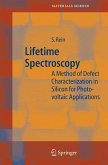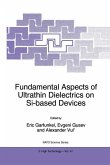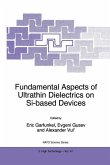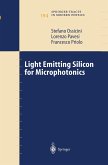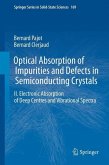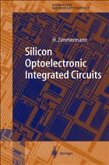Metal Impurities in Silicon-Device Fabrication treats the transition-metal impurities generated during the fabrication of silicon samples and devices. The different mechanisms responsible for contamination are discussed, and a survey is given of their impact on device performance. The specific properties of the main and rare impurities in silicon are examined, as well as the detection methods and requirements in modern technology. Finally, impurity gettering is studied along with modern techniques to determine the gettering efficiency. In all of these subjects, reliable and up-to-date data are presented. This monograph provides a thorough review of the results of recent scientific investigations, as well as the relevant data and properties of the various metal impurities in silicon. The new edition includes important recent data and a number of new tables.
Hinweis: Dieser Artikel kann nur an eine deutsche Lieferadresse ausgeliefert werden.
Hinweis: Dieser Artikel kann nur an eine deutsche Lieferadresse ausgeliefert werden.


